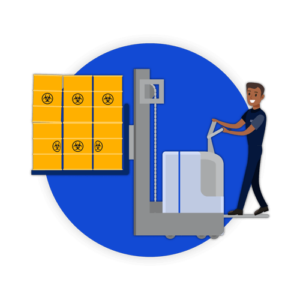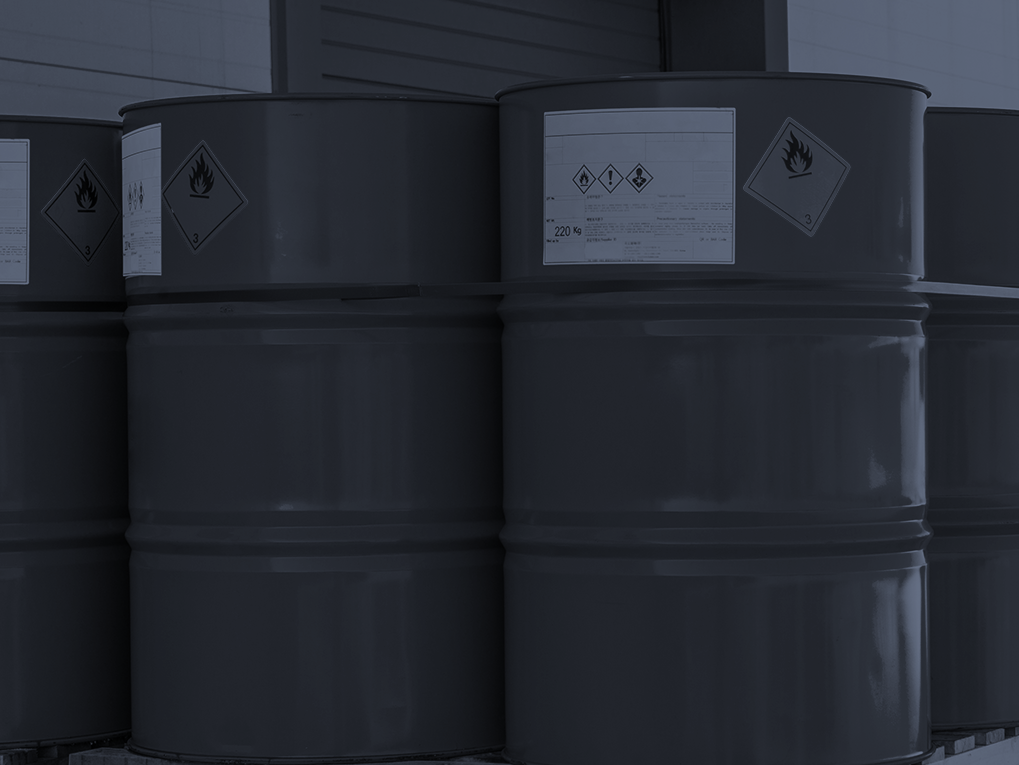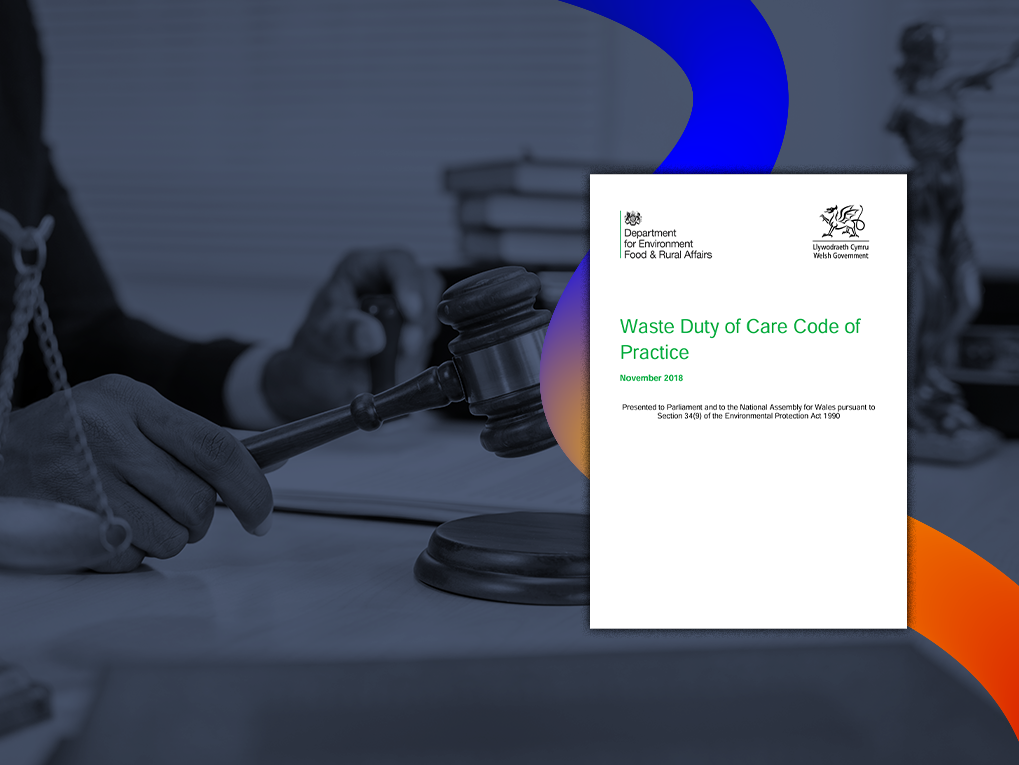Lab pack waste… It’s a phrase that may conjure up images of obscure chemicals being used for experiments that would blow the eyebrows off of your old school science teacher – but that’s not always the case.
Whilst labs are certainly one of the most common producers of lab pack waste, the reality is that many UK businesses, from schools and hospitals to manufacturers and even dry cleaners and garden centres, generate hazardous waste requiring specialist removal.
This waste, often packaged and transported in ‘lab packs’ presents unique challenges for disposal, demanding strict adherence to regulations and a commitment to environmental responsibility.
Join us as we remove the guesswork around lab packs and break down everything you need to know about lab packing.
- Understanding Lab Pack Waste
- What Waste Materials Go into a Lab Pack?
- Why Is Lab Packing Important?
- The Legal Landscape: UK Lab Pack Regulations
- Ensuring Compliant Lab Pack Disposal
- Minimising Lab Pack Waste: A Proactive Approach
- Hazport: Your Partner In Compliant Lab Pack Disposal
Understanding Lab Pack Waste
 So, what is a lab pack? In short, it’s a secure, organised, and clearly marked container of hazardous waste, safely packaged for transport.
So, what is a lab pack? In short, it’s a secure, organised, and clearly marked container of hazardous waste, safely packaged for transport.
A lab pack is a collection of unwanted or obsolete chemicals and other hazardous materials placed into a large, robust, approved container used for transporting smaller containers of hazardous waste.
In some ways, you could think of it as a container for containers. These smaller containers hold a variety of hazardous materials, carefully sorted and cushioned with inert packaging materials like vermiculite to prevent leaks and reactions during transport.
This packaging method enables the safe and efficient disposal of diverse chemical waste streams, which would be far more complex and risky to handle individually.
What Do Lab Packs Look Like?
Lab packs typically use sturdy containers ranging in size and appearance from 5-gallon rigid boxes to 55-gallon drums. Inside, smaller containers packed with absorbent material for cushioning hold different types of chemicals and hazardous waste.
The sealed lab pack must be labelled with details of its contents and any required precautions.
What Waste Materials Go into a Lab Pack?
Lab pack waste isn’t limited to chemicals. It can also include a wide range of hazardous waste, such as: 
- Acids and Bases: Corrosive substances requiring careful neutralisation and disposal.
- Solvents: Flammable or toxic liquids used in cleaning, manufacturing, and laboratories.
- Paints and Inks: Often containing heavy metals and volatile organic compounds (VOCs).
- Pesticides and Herbicides: Potent chemicals requiring specialised disposal to prevent environmental contamination.
- Pharmaceuticals: Expired or unused medications, many of which pose environmental and health risks.
- Aerosols and Compressed Gases: Potentially flammable or explosive, requiring careful handling and disposal.
- Reactive Materials: Substances that can react violently with other chemicals or even air and water.
- Clinical Waste: Infectious or pathological waste from hospitals, healthcare facilities and labs.
- Batteries: Containing heavy metals like mercury, cadmium, and lead.
The diversity of materials that can be transported in a lab pack underscores the complexity of their disposal. Each substance has unique properties according to its hazardous property code and requires specific treatment to minimise its environmental impact.
This may leave you wondering which hazardous waste types can be transported together in the same lab packs. Allow us to remove the guesswork.
Unsure What Goes Into a Lab Pack?
 The process should always start with a lab pack chemist identifying, classifying, and segregating each chemical and hazardous material based on its hazardous properties, chemical characteristics and disposal facility guidelines. This allows for the assembly of a lab pack that is safe for transport and compliant with regulations.
The process should always start with a lab pack chemist identifying, classifying, and segregating each chemical and hazardous material based on its hazardous properties, chemical characteristics and disposal facility guidelines. This allows for the assembly of a lab pack that is safe for transport and compliant with regulations.
Mixing non-compatible chemicals into a lab pack container can impact the health and safety of anyone who comes into contact with it and in extreme cases, can have fatal consequences.
Need a mobile chemist to help with your waste? Contact us today.
Why Is Lab Packing Important?
The consequences of improper hazardous waste disposal can be devastating. From contaminating soil and water supplies to posing serious health risks to people and wildlife, the potential for harm is significant.
There are strict regulations in place to govern the handling and disposal of hazardous waste. Non-compliance can lead to hefty fines and legal action, not to mention reputational damage.
The Legal Landscape: UK Lab Pack Regulations
There are several key pieces of legislation governing compliant lab pack disposal in the UK, these include:
Environmental Protection Act 1990: This overarching legislation provides the framework for environmental protection in the UK, establishing the duty of care for waste producers.
Hazardous Waste (England and Wales) Regulations 2005: These regulations specifically address the management and disposal of hazardous waste, including duties of care, record-keeping, and transportation requirements.
The Carriage of Dangerous Goods and Use of Transportable Pressure Equipment Regulations 2009: These regulations govern the transport of dangerous goods to ensure the safety of both the public and the environment during transit.
You can learn more about hazardous waste regulations by visiting our compliance page.
Waste regulations are complex and it can feel daunting to navigate. This is where hazardous waste specialists come into play, helping you maintain compliance and ensure the best outcomes for your waste.
Ensuring Compliant Lab Pack Disposal
Awareness of the hazardous waste regulations is only part of the puzzle. Reputable hazardous waste management companies also play a crucial role in helping you ensure the safe and compliant disposal of lab pack waste.
But how do you find the right service provider for you?
Choosing a reliable and experienced hazardous waste management company requires looking for a company that:
- Holds the necessary licenses and permits: The company needs to be licensed to handle the specific types of hazardous waste you generate.
- Has a proven track record: Check for testimonials, Google reviews, and case studies that demonstrate their expertise and reliability.
- Offers comprehensive services: Choose a company that can handle all aspects of your lab pack waste disposal, from identification and classification to final disposal.
- Prioritises safety and compliance: Look for a company with a strong commitment to safety and adherence to all relevant regulations.
- Provides transparent pricing: You’ll want to ensure the company offers clear and competitive pricing with no hidden fees.
- Ensures traceability of your waste: The journey of your waste must be clearly documented and traceable after it leaves your site.
Any service provider worth their salt should also be willing to provide advice and guidance on best practices to help your business ensure compliance and minimise the environmental impacts of hazardous waste.
Minimising Lab Pack Waste: A Proactive Approach
 Whilst compliant waste disposal is crucial, the most effective hazardous waste management method at the top of the waste hierarchy is prevention – making it worth thinking about how you can minimise the generation of lab pack waste in the first place.
Whilst compliant waste disposal is crucial, the most effective hazardous waste management method at the top of the waste hierarchy is prevention – making it worth thinking about how you can minimise the generation of lab pack waste in the first place.
Let’s look at some steps you can take to minimise lab pack waste…
#1 Implement a Chemical Inventory Management System
It’s important to keep a clear and up-to-date inventory system. This can help you track chemical usage, identify expiring stock, and prevent over-purchasing. This step directly addresses the root cause of most lab pack waste – unused or expired chemicals.
#2 Optimise Chemical Usage
Carefully planned operations and experiments can help minimise the quantities of chemicals used and also offer the chance to consider alternative, less hazardous substances where possible. This approach reduces both the volume and hazard level of potential waste.
#3 Promote Redistribution of Chemicals
Establish a system for sharing surplus chemicals between labs either within your organisation or even with others (where legal and practical to do so). This helps prevent perfectly usable chemicals from becoming waste simply because one lab doesn’t need them anymore.
#4 Use Proper Storage to Extend Shelf Life
Incorrect storage conditions can lead to chemicals degrading early and needing to be disposed of ahead of their scheduled expiration date. Ensure staff are aware of proper storage procedures, including temperature control, segregation and appropriate containment. This will minimise waste arising from spiled or unusable chemicals.
#5 Regularly Review Old Stock
Building on step 1, implement a regular schedule for reviewing chemical inventories and disposing of outdated or unwanted materials. Don’t let chemicals languish on shelves when prompt disposal can reduce the risk of incidents due to an overaccumulation of waste.
Key Takeaways
- What is it? Lab packs are secure containers for transporting various hazardous wastes, simplifying the disposal of diverse chemical streams.
- What’s inside? Lab packs contain smaller containers of chemicals and other hazardous materials, packed with absorbent material and labelled with contents and precautions. Common lab pack waste materials include acids, bases, solvents, paints, pesticides, and pharmaceuticals.
- Why are they important? Lab packs ensure safe and compliant transport of hazardous waste, preventing public health risks, environmental contamination, and legal issues.
- Waste minimisation is key! Prevention is always better than cure. Implement strategies to reduce lab pack waste, such as chemical inventory management, optimised chemical usage, redistribution of surplus chemicals, proper storage, and regular stock reviews.
Hazport: Your Partner In Compliant Lab Pack Disposal

At Hazport, we understand the complexities of lab packing, and we’re committed to providing safe and compliant disposal solutions.
Don’t leave your safety and compliance to chance. Partner with Hazport to ensure your waste is handled the right way. Our experienced team is ready to support you every step of the way, from identifying and segregating waste to final disposal.
Contact us today to learn more about our lab packing services and how we can help you create a safer and more compliant waste management system for your facility.





